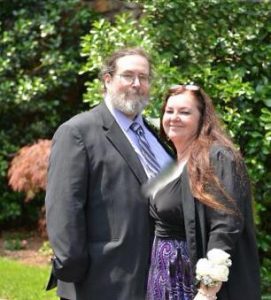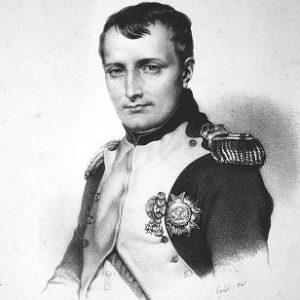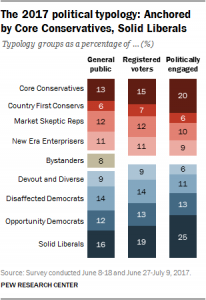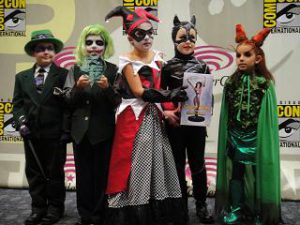This is mark Joseph “young” blog entry #209, on the subject of Versers Victorious.
With permission of Valdron Inc I have now completed publishing my third novel, For Better or Verse, in serialized form on the web (that link will take you to the table of contents). If you missed the first two, you can find the table of contents for the first at Verse Three, Chapter One: The First Multiverser Novel, and that for the second at Old Verses New. There was also a series of web log posts looking at the writing process, the decisions and choices that delivered the final product; those posts are indexed along with the chapters in the tables of contents pages. Now as the third is posted I am again offering a set of “behind the writings” insights. This “behind the writings” look definitely contains spoilers because it sometimes talks about what I was planning to do later in the book–although it sometimes raises ideas that were never pursued. You might want to read the referenced chapters before reading this look at them. Links below (the section headings) will take you to the specific individual chapters being discussed, and there are (or will soon be) links on those pages to bring you back hopefully to the same point here.
There is also a section of the site, Multiverser Novel Support Pages, in which I have begun to place materials related to the novels beginning with character papers for the major characters, hopefully giving them at different stages as they move through the books.
These were the previous mark Joseph “young” web log posts covering this book:
-
#157: Versers Restart (which provided this kind of insight into the first eleven chapters);
-
#164: Versers Proceed (which covered chapters 12 through 22);
-
#170: Versers Explore (which covered chapters 23 through 33);
-
#174: Versers Achieve (chapters 34 through 44);
-
#180: Versers Focus (chapters 45 through 55);
-
#183: Verser Transitions (chapters 56 through 66);
-
#186: Worlds Change (chapters 67 through 77);
-
#191: Versers Travel (chapters 78 through 88);
-
#198: Verser Trials (89 through 99);
-
#202: Verser Confrontations (chapters 100 through 110);
-
#205: Verser Reunion (chapters 111 through 121).
This picks up from there, completing the book with chapters 122 through 132.

History of the series, including the reason it started, the origins of character names and details, and many of the ideas, are in those earlier posts, and won’t be repeated here.
Return to Top
Quick links to discussions in this page:
Chapter 122, Slade 89
Chapter 123, Hastings 134
Chapter 124, Brown 93
Chapter 125, Slade 90
Chapter 126, Hastings 135
Chapter 127, Brown 94
Chapter 128, Slade 91
Chapter 129, Hastings 136
Chapter 130, Brown 95
Chapter 131, Slade 92
Chapter 132, Brown 96
Chapter 122, Slade 89
It was too soon to explain what happened, but I had to let the reader know that the characters were aware of the problems. I’d devised the answers already, but couldn’t take the time here to give them.
I had become aware of the redundancy between both locking out the computer controls and destroying the mechanism. I didn’t really have a good reason to lock out the computers if the mechanism was going to be destroyed, but I did have a reason to destroy the mechanism if the computer lockouts were in place, so I tried to make it all seem credible.
The barn would be Cowtown; I just needed a few places they could use in the travel for color. The idea of having them split up had come to me more as an added precaution.
I was actually stuck for a place for them to go at this point; but it was obvious that once Tubrok knew who was behind the raids, he’d know where to look for them, and they were going to have to move. It would be most obvious perhaps to Merlin, who had something of an outsider’s perspective, but knew Tubrok.
The legend of the Mystic came back to me abruptly. I wanted to start having ordinary people attack domes, and this was a good opportunity to kick-start that.
Chapter 123, Hastings 134
My explanation for how Omigger had come to be Merlin was intact before this point, but this was the time to deliver it. The tobacco thing was a passing point.
I decided on Philadelphia next. After all, this was where Lauren had started, but she’d not yet freed it. She had attacked the dome control station to steal the papers, but had not yet opened the dome. I also had a wild idea of having them travel from the dome control station in a tour of the world only to return to Ana and Dimitri to stay there for a few days–after all, that would not be where Tubrok would look.
Chapter 124, Brown 93
The details of this came together rather quickly; the presentation took longer. But I liked the idea of going back to Philadelphia the way she’d left it, by Speedline. Yet I was getting close to the climactic battle with Tubrok, and I didn’t want to overdo the combat just before it. This all seemed to work.
Chapter 125, Slade 90
At this point it was becoming necessary for me to sketch out what was going to happen in the remainder of the book. There were a lot of things I had to do, and not much time in which to do them.
The fact that Derek could turn into Ferris Hoffman and so catch himself when falling had to be worked into a combat situation; and that meant it had to be established that Bethany had done the magic clothes.
The next assault really had to be Washington; nothing else made sense. That also meant they were going to face Tubrok finally. I had to come up with a way for him to make a speech in the midst of this–a magical defense that was going to cause a lull in the fighting at some point–and I had to get the dialogue down so it really made sense and mattered.
Lauren was going to die in this battle; but she couldn’t die at the beginning of it, and she couldn’t die at the end of it. I was going to have to have another Hastings chapter, and then move away from her and back again. It made sense at this point for Slade to wrap up the fight prelims (including the suit for Derek) and the decision to go to Washington. My thinking was that Ana would mention it, and give some foreboding about it. After that, Lauren will give us the movement to Washington and the confrontation itself. Derek and Slade will then report the fight details; in that, Derek has to be thrown or knocked from some high point (or perhaps the floor beneath him has to be destroyed so he falls through?) so he can change to Ferris and catch himself. Then the fight will continue through Lauren’s eyes, and at her climactic moment she will grab hold of Tubrok and pronounce the fire spell that killed Horta. This will be the end of her story, but not the end of the fight, as she will verse out (and maybe take a couple of Tubrok’s lackeys with her) but Tubrok will survive.
I was thinking that Derek would see Tubrok pick himself up and revitalize himself, but now perhaps it would be better for this to be Slade. The combat continues, with Horta and Merlin throwing enough magic around that the place starts to crumble (Tubrok will have used a darkness spell and something else to keep the sunlight out). It would then shift to Derek. Perhaps if Derek fell into a hole, caught himself by changing to Ferris, and then got out by changing to Morach, he would emerge from the hole a sprite, deprived of his larger weapons. In this case, he would use the psionics he learned, and then maybe we’ll surprise everything by having the sleep drug work on Tubrok, so he goes down and can be finished by something else. That would be a good ending, I think. Thereafter, Merlin asks who his new student is.
That leaves me in need of a denouement. There were good afterthoughts in the first two books, and I’ll have to think of one for this one. Also, the first two books both ended with one of the characters in the next world. That’s problematic for this one, as Lauren will not be in the fourth book and Derek and Slade won’t verse out of this one. Perhaps I need to bring in one chapter of Kondor–I don’t yet know where he is, but he will be back in book four, so it’s time to start giving thought to that.
I came up with Slade’s speech about being prepared for the next thing; I figure that’s my big point in the denouement. I did this while I was thinking over how this Slade chapter was going to go, and typed a quick draft at the end for reference.
The prophecy was a last-minute addition. Since I already knew that it would be Derek, Lauren’s student, who finished Tubrok, I thought it would add tremendous tension for the prediction to have suggested she would defeat him and then have her die.
I knew at this point that I was entering a single combat that would last several chapters. Lauren would get us there. Derek would fall into a pit, and emerge as a sprite. Tubrok would use darkness to blot out the sun. It was going to be a long battle, with lots of combatants and lots of actions, and I was going to have to think of much more to make it work as it went. The end of the book was about to begin.
Chapter 126, Hastings 135
I had actually forgotten that there would be people in the control room when they arrived; I let this carry over to Lauren. It took me a couple sittings to get all the way through this chapter, as I kept having to stop and think about how it should unfold.
I’d been toying with the booby-trap idea for some time. The more I considered it, the more sense it made.
I was also uncertain how to proceed with the end; I started trying to outline the last chapters and the major events they would include. Lauren had to verse out; Derek had to see it, I think, but he also had to fall into the pit. After he fell into the pit, he had to turn into a sprite, and come out again; and he had to make the fatal shot. I intended to have Tubrok block the sun with several magics, and make a bit of a speech about having them all together to destroy them. It seems that I’ve got to start with Derek for the arrival and joining battle. Then Slade will take the brunt of the combat, showing that they were tearing through enemies but badly outnumbered. Lauren steps forward in her chapter; she and Merlin will be focused on Tubrok, and she’ll end her appearance in the book with that fire spell that took out Horta. Then Derek is horrified that Lauren is gone but Tubrok, although unsteady, remains; and before he can act, the ground opens beneath him and he falls. We have him plunging, transforming, and catching himself, and leave him on the ground below–or maybe still headed toward it. That takes us back to Slade, who is fighting a losing battle (but then, that’s what Ragnorak is about, isn’t it?), despite Shella, Bethany, and Merlin. Probably he plunges into battle against Tubrok, who isn’t so good against physical attacks despite being a tough kill. Yet he’s tiring, wearing down. Derek becomes Morach, flies out of the pit, recovers his bow and arrows from his pack, and fires the pinprick into Tubrok’s cheek. The vampire reels and falls, and then vanishes to dust. We go to Slade for the aftermath and Slade’s speech.
I keep wondering what to do for the final chapter. Lauren will not be in the fourth book (although otherwise details are still sketchy, but I’m thinking of a spy story for Derek). Derek and Slade won’t have versed out. I’m wondering about bringing Joe Kondor in for the last chapter, although I don’t know where he is. I don’t like that, but it might work.
Chapter 127, Brown 94
Derek is caught in that moment in which what he had intended to do, what he always did on these trips, isn’t going to work, and he has to change gears, as it were, to figure out what he should do instead. I’ve had that problem in other situations, where I knew what I was going to do and now that for some reason that was not a viable choice I couldn’t for a moment get away from that to wrap my head around doing something else instead.
Derek is almost last through the door because despite all his skill he has very little experience fighting–he has helped them fight these battles, but he is usually “the computer guy who also knows how to use a gun”, not one of the fighters.
I’ll credit Shakespeare’s MacBeth for the inspiration for the prophecy that Tubrok would not be killed by anyone born in that world; I was always fond of that twist. In MacBeth the charm is no man of woman born would kill him, but MacDuff announces that he was from his mother’s womb untimely ripped (born by caesarean section). Tolkien probably stole it first–his chief nazgul had been promised that no man could kill him, but he was killed by a halfling and a woman. My twist, of course, is that Lauren, Bob, and Derek were all born in the parallel earth, and Shella and Merlin/Omigger were born in the medieval fantasy world Slade had visited, so Bethany is the only one present who can’t kill Tubrok if the prophecy is true.
Chapter 128, Slade 91
It is a perhaps dubious supposition of Multiverser that allows pagan Bob Slade to be infused with power from God’s Holy Spirit, but it is not completely unfounded. The assumption is that in the spirit realm there is the one Creator God, and that religions that worship that one God, whether Christianity, Judaism, Islam, or any of their offshoots, are all “close enough for mortals” to the truth; and that there are many other spirits who fall into three categories, those who are aligned with and servants of God (“alliance”), those which are openly opposed to God (“anarch”), and those who have not (yet) chosen a side (“neutral”). Many of the “good” heads of pagan pantheons are presumed to be “alliance”, servants of God who were given charge of some group of people somewhere in the world to prepare them for the truth, and thus Odin is seen as God’s servant preparing his people ultimately to become servants of God. Thus by serving Odin Slade is indirectly serving God, in something of the same way that a private who obeys the commands of his sergeant is indirectly obeying the Commander in Chief of the military.
I suppose that Bob delivers the moral of the story in his thoughts to himself, that “if every good man fights to his last breath evil loses, even if it takes the field.”
Chapter 129, Hastings 136
I had been scouring scripture for good verses for Lauren to use, so she would have something new in her repertoire at this point. I’ve never been particularly good at chapter-and-verse addresses, but I might have recorded them somewhere.
I knew Lauren was going to verse out here, and she was going to finish her own life by being caught in the same fire she calls against Tubrok. However, she knows she can’t cast that spell and survive it, so at this point I’m making her aware that she’s not going to survive this combat anyway, so she’ll use the spell.
“East side, center gate” was a phrase given to me by Steve Freed, when we were both leaving Gordon College. It is a supposed meeting place in the New Jerusalem, a way of saying I will see you there.
Chapter 130, Brown 95
I was facing several issues at this point. One was, if the death of Tubrok closed the chasm into which Derek was falling, he would be buried in it; of course, it might not do that, and in the end it seemed better that it not. Another was that if Tubrok had just died, the enemy would be routed and the battle ended, but that wasn’t the way this was to go: Derek had to deal the fatal shot. So I shifted to Derek’s perspective as he is still falling (probably a moment ago) in this pit, and dealt with bringing him back to finish the battle.
I don’t know when I decided that Ferris Hoffman would be the answer here, but it was to me significant that the form that he had disdained became the one that saved him. Had he stayed Derek, he would have crashed and died; had he become Morach he would probably have dropped the rifle and seen it damaged. Only as Ferris could he slow his fall and keep the rifle.
It seemed important to make the statement that Lauren had won, that this was her victory, even though Derek fired the fatal shot. I had realized at some point that although the first book was Slade’s story, and the third book perhaps another story about Slade, and the middle book Derek’s story, the three books together formed Lauren’s story arc, the story in which she faces and ultimately defeats the vampires, and the death of Tubrok here, in the same battle in which she died, means that she won.
Chapter 131, Slade 92
Maybe, though, the moral is in Slade’s conversation with Derek, regarding each moment in life preparing us both for the end and for the next moment.
I glossed over a minor issue: Lauren is the only member of the group that had a way to pay for things. Bethany was going to work on something, but we never saw her do so; so they don’t really have any money for a place to stay. On the other hand, they’ve got three wizards, so they’ll probably come up with something.
Chapter 132, Brown 96
I found a way to wrap up the book, mostly talking about the fact that there were many other worlds, and reminding the reader that we did not know where Lauren went or where Joe was. Joe would return in the beginning of the next book; Lauren would wait for another book after that. Derek and Bob were still here, and I would need a chapter to send them on their way to new places, but of course I was setting up that expectation as well.
This has been the twelfth and final behind the writings look at For Better or Verse. There is hope that the fourth Multiverser novel, Spy Verses, will soon appear on the web site, if there is interest and continued support from readers.









